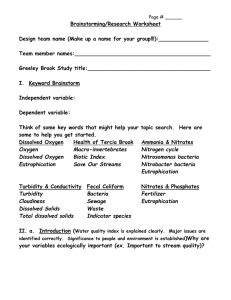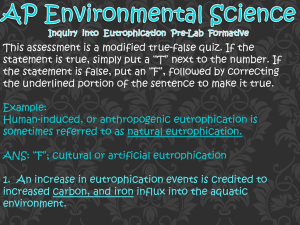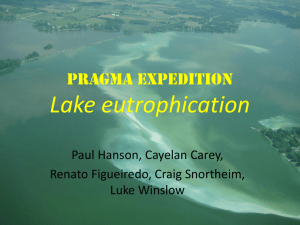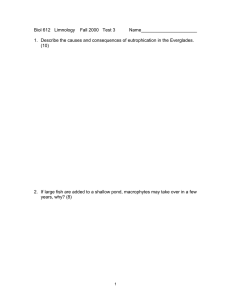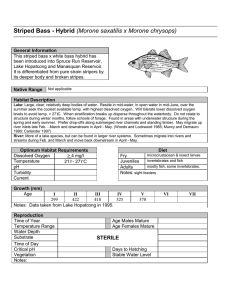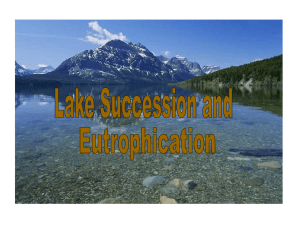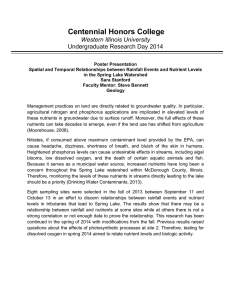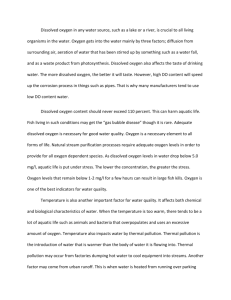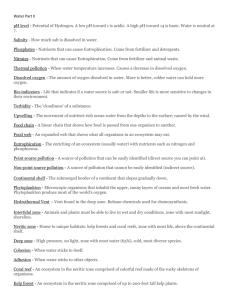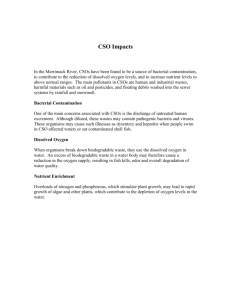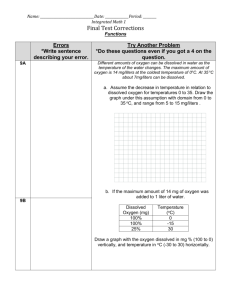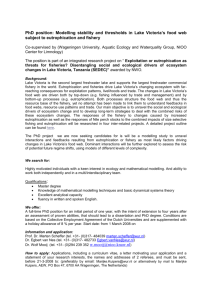Mass Balance
advertisement
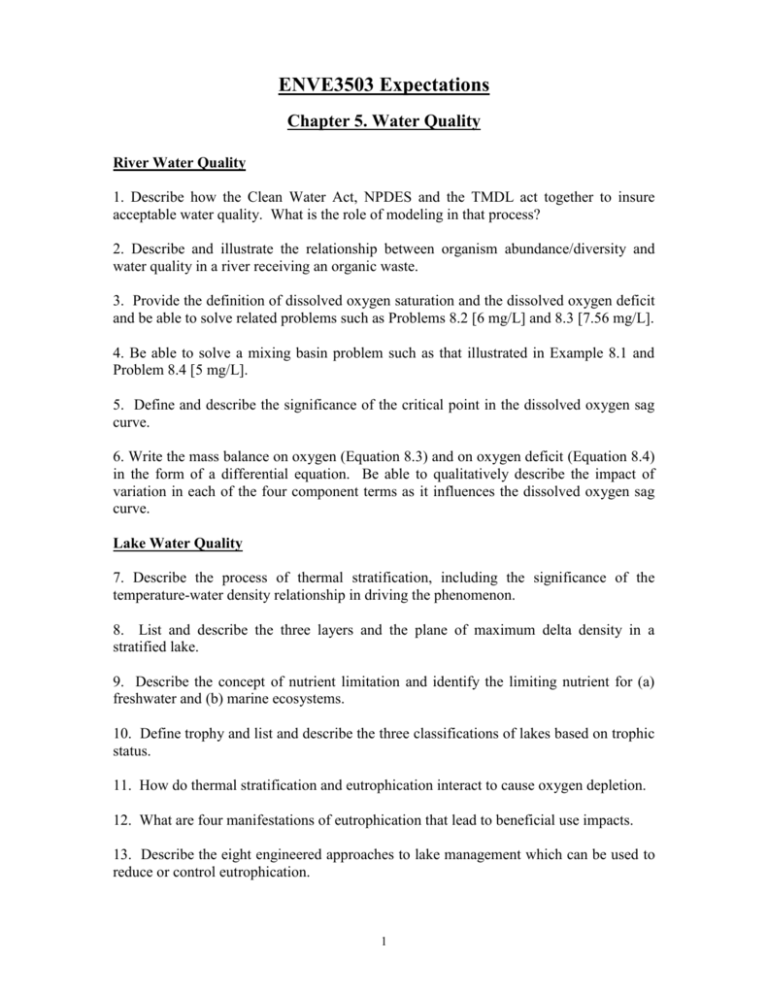
ENVE3503 Expectations Chapter 5. Water Quality River Water Quality 1. Describe how the Clean Water Act, NPDES and the TMDL act together to insure acceptable water quality. What is the role of modeling in that process? 2. Describe and illustrate the relationship between organism abundance/diversity and water quality in a river receiving an organic waste. 3. Provide the definition of dissolved oxygen saturation and the dissolved oxygen deficit and be able to solve related problems such as Problems 8.2 [6 mg/L] and 8.3 [7.56 mg/L]. 4. Be able to solve a mixing basin problem such as that illustrated in Example 8.1 and Problem 8.4 [5 mg/L]. 5. Define and describe the significance of the critical point in the dissolved oxygen sag curve. 6. Write the mass balance on oxygen (Equation 8.3) and on oxygen deficit (Equation 8.4) in the form of a differential equation. Be able to qualitatively describe the impact of variation in each of the four component terms as it influences the dissolved oxygen sag curve. Lake Water Quality 7. Describe the process of thermal stratification, including the significance of the temperature-water density relationship in driving the phenomenon. 8. List and describe the three layers and the plane of maximum delta density in a stratified lake. 9. Describe the concept of nutrient limitation and identify the limiting nutrient for (a) freshwater and (b) marine ecosystems. 10. Define trophy and list and describe the three classifications of lakes based on trophic status. 11. How do thermal stratification and eutrophication interact to cause oxygen depletion. 12. What are four manifestations of eutrophication that lead to beneficial use impacts. 13. Describe the eight engineered approaches to lake management which can be used to reduce or control eutrophication. 1
